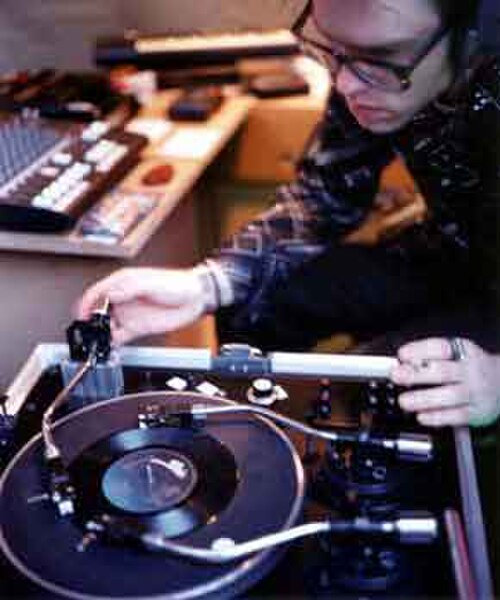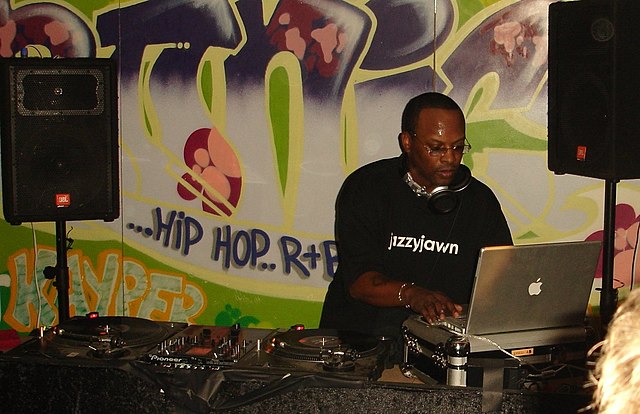Turntablism is the art of manipulating sounds and creating new music, sound effects, mixes and other creative sounds and beats, typically by using two or more turntables and a cross fader-equipped DJ mixer. The mixer is plugged into a PA system and/or broadcasting equipment so that a wider audience can hear the turntablist's music. Turntablists typically manipulate records on a turntable by moving the record with their hand to cue the stylus to exact points on a record, and by touching or moving the platter or record to stop, slow down, speed up or, spin the record backwards, or moving the turntable platter back and forth, all while using a DJ mixer's crossfader control and the mixer's gain and equalization controls to adjust the sound and level of each turntable. Turntablists typically use two or more turntables and headphones to cue up desired start points on different records.
DJ Qbert manipulating a record turntable at a turntablism competition in France in 2006
World premiere of the Tri-Phonic Turntable, July 14, 1997, London
Record producer DJ Jazzy Jeff manipulating a record turntable in England in 2005.
Sid Wilson of Slipknot operating direct-drive turntables at Mayhem Festival in 2008.
A phonograph, later called a gramophone, and since the 1940s a record player, or more recently a turntable, is a device for the mechanical and analogue reproduction of recorded sound. The sound vibration waveforms are recorded as corresponding physical deviations of a spiral groove engraved, etched, incised, or impressed into the surface of a rotating cylinder or disc, called a "record". To recreate the sound, the surface is similarly rotated while a playback stylus traces the groove and is therefore vibrated by it, very faintly reproducing the recorded sound. In early acoustic phonographs, the stylus vibrated a diaphragm which produced sound waves which were coupled to the open air through a flaring horn, or directly to the listener's ears through stethoscope-type earphones.
Thomas Edison with his second phonograph, photographed by Levin Corbin Handy in Washington, April 1878
Emile Berliner with the first gramophone he developed, in Hanover, Germany
An Edison Standard Phonograph that uses wax cylinders
Wood engraving published in The Illustrated Australian News, depicting a public demonstration of new technology at the Royal Society of Victoria (Melbourne, Australia) on 8 August 1878.








